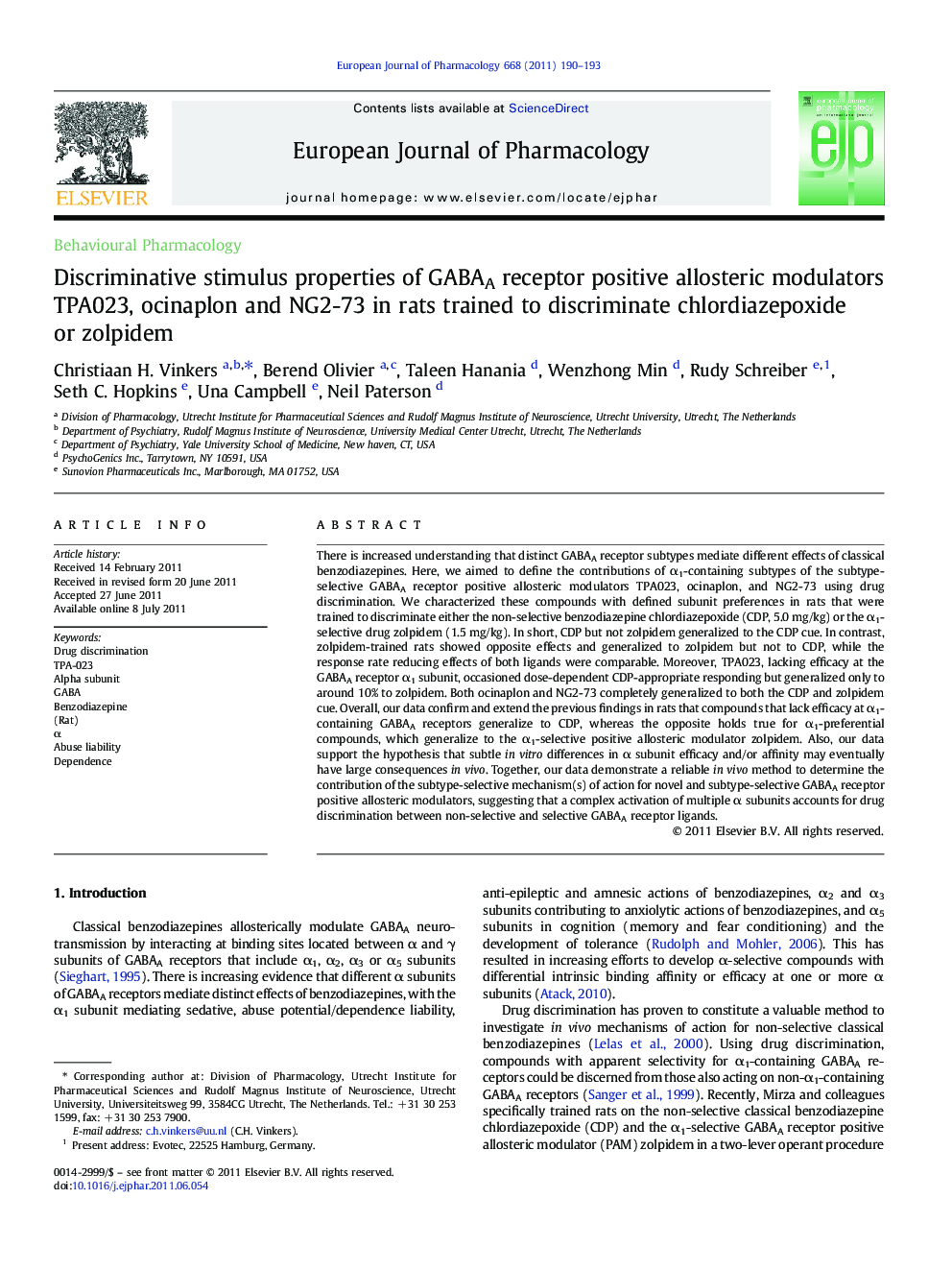| Article ID | Journal | Published Year | Pages | File Type |
|---|---|---|---|---|
| 5830082 | European Journal of Pharmacology | 2011 | 4 Pages |
There is increased understanding that distinct GABAA receptor subtypes mediate different effects of classical benzodiazepines. Here, we aimed to define the contributions of α1-containing subtypes of the subtype-selective GABAA receptor positive allosteric modulators TPA023, ocinaplon, and NG2-73 using drug discrimination. We characterized these compounds with defined subunit preferences in rats that were trained to discriminate either the non-selective benzodiazepine chlordiazepoxide (CDP, 5.0 mg/kg) or the α1-selective drug zolpidem (1.5 mg/kg). In short, CDP but not zolpidem generalized to the CDP cue. In contrast, zolpidem-trained rats showed opposite effects and generalized to zolpidem but not to CDP, while the response rate reducing effects of both ligands were comparable. Moreover, TPA023, lacking efficacy at the GABAA receptor α1 subunit, occasioned dose-dependent CDP-appropriate responding but generalized only to around 10% to zolpidem. Both ocinaplon and NG2-73 completely generalized to both the CDP and zolpidem cue. Overall, our data confirm and extend the previous findings in rats that compounds that lack efficacy at α1-containing GABAA receptors generalize to CDP, whereas the opposite holds true for α1-preferential compounds, which generalize to the α1-selective positive allosteric modulator zolpidem. Also, our data support the hypothesis that subtle in vitro differences in α subunit efficacy and/or affinity may eventually have large consequences in vivo. Together, our data demonstrate a reliable in vivo method to determine the contribution of the subtype-selective mechanism(s) of action for novel and subtype-selective GABAA receptor positive allosteric modulators, suggesting that a complex activation of multiple α subunits accounts for drug discrimination between non-selective and selective GABAA receptor ligands.
